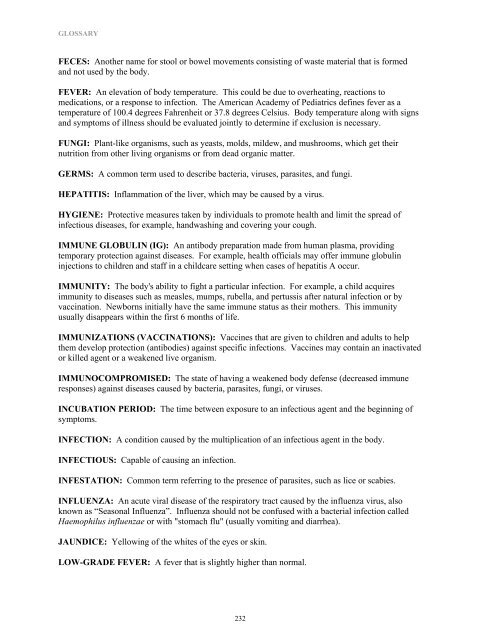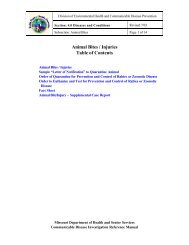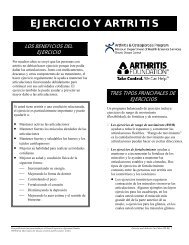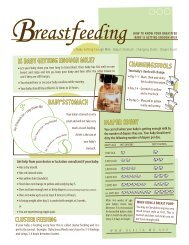Prevention and Control of Communicable Diseases - Missouri ...
Prevention and Control of Communicable Diseases - Missouri ...
Prevention and Control of Communicable Diseases - Missouri ...
Create successful ePaper yourself
Turn your PDF publications into a flip-book with our unique Google optimized e-Paper software.
GLOSSARY<br />
FECES: Another name for stool or bowel movements consisting <strong>of</strong> waste material that is formed<br />
<strong>and</strong> not used by the body.<br />
FEVER: An elevation <strong>of</strong> body temperature. This could be due to overheating, reactions to<br />
medications, or a response to infection. The American Academy <strong>of</strong> Pediatrics defines fever as a<br />
temperature <strong>of</strong> 100.4 degrees Fahrenheit or 37.8 degrees Celsius. Body temperature along with signs<br />
<strong>and</strong> symptoms <strong>of</strong> illness should be evaluated jointly to determine if exclusion is necessary.<br />
FUNGI: Plant-like organisms, such as yeasts, molds, mildew, <strong>and</strong> mushrooms, which get their<br />
nutrition from other living organisms or from dead organic matter.<br />
GERMS: A common term used to describe bacteria, viruses, parasites, <strong>and</strong> fungi.<br />
HEPATITIS: Inflammation <strong>of</strong> the liver, which may be caused by a virus.<br />
HYGIENE: Protective measures taken by individuals to promote health <strong>and</strong> limit the spread <strong>of</strong><br />
infectious diseases, for example, h<strong>and</strong>washing <strong>and</strong> covering your cough.<br />
IMMUNE GLOBULIN (IG): An antibody preparation made from human plasma, providing<br />
temporary protection against diseases. For example, health <strong>of</strong>ficials may <strong>of</strong>fer immune globulin<br />
injections to children <strong>and</strong> staff in a childcare setting when cases <strong>of</strong> hepatitis A occur.<br />
IMMUNITY: The body's ability to fight a particular infection. For example, a child acquires<br />
immunity to diseases such as measles, mumps, rubella, <strong>and</strong> pertussis after natural infection or by<br />
vaccination. Newborns initially have the same immune status as their mothers. This immunity<br />
usually disappears within the first 6 months <strong>of</strong> life.<br />
IMMUNIZATIONS (VACCINATIONS): Vaccines that are given to children <strong>and</strong> adults to help<br />
them develop protection (antibodies) against specific infections. Vaccines may contain an inactivated<br />
or killed agent or a weakened live organism.<br />
IMMUNOCOMPROMISED: The state <strong>of</strong> having a weakened body defense (decreased immune<br />
responses) against diseases caused by bacteria, parasites, fungi, or viruses.<br />
INCUBATION PERIOD: The time between exposure to an infectious agent <strong>and</strong> the beginning <strong>of</strong><br />
symptoms.<br />
INFECTION: A condition caused by the multiplication <strong>of</strong> an infectious agent in the body.<br />
INFECTIOUS: Capable <strong>of</strong> causing an infection.<br />
INFESTATION: Common term referring to the presence <strong>of</strong> parasites, such as lice or scabies.<br />
INFLUENZA: An acute viral disease <strong>of</strong> the respiratory tract caused by the influenza virus, also<br />
known as “Seasonal Influenza”. Influenza should not be confused with a bacterial infection called<br />
Haemophilus influenzae or with "stomach flu" (usually vomiting <strong>and</strong> diarrhea).<br />
JAUNDICE: Yellowing <strong>of</strong> the whites <strong>of</strong> the eyes or skin.<br />
LOW-GRADE FEVER: A fever that is slightly higher than normal.<br />
232
















